003: Outpost One
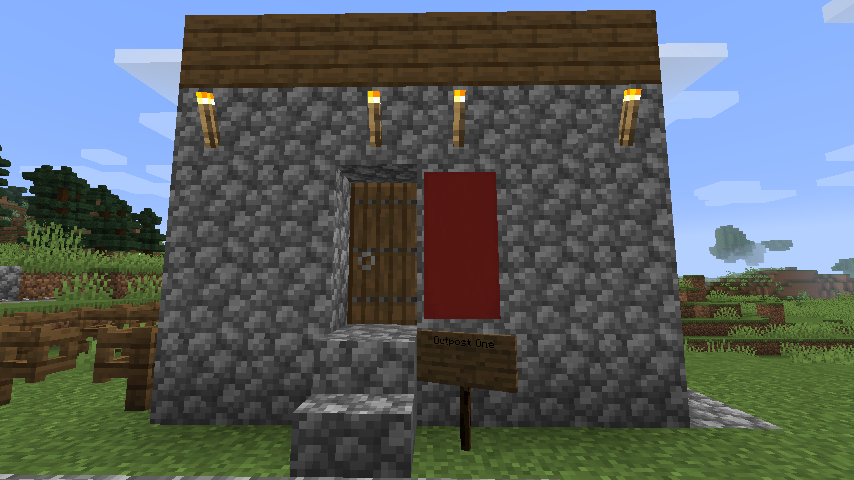
This was the first waystation I built, when I conceived of the idea of building a waypoint where I could safely rest when traveling overnight. It’s held up surprisingly well in light of later design choices born of experimentation. Currently, it serves as the central anchor of the Western Railway. It’s got a red banner to the right of the door because I was using color-coded banners to show me where my waystations are on the in-game maps. As a legacy station, it didn’t get the white and purple Imperial banner, as I’ve got some kind of vague idea about historic preservation here, even in a virtual world. This is a subject I should go off about at some point as capitalist societies will happily sell out their past and rip it down if there’s a profit to be made. I currently live in Nashville, TN, which is a truly horrid example of this. But that’s another soapbox for another time.
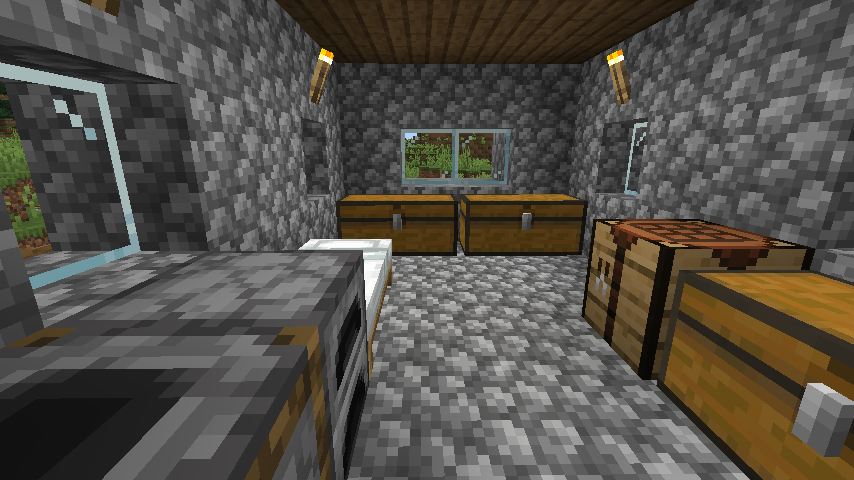
It’s a block smaller than the later standard 7x9 layout, with a 4x6 interior space, large enough for a crafting table, two furnaces, four double wide chests and a bed, without having a lot of waste space or requiring more blocks than I really want to cart around. While there’s been variation along the way, especially in terms of décor, the basic layout has standardized: 5 blocks across, 7 deep, furnace and crafting table and supply chest to the left, Tools chest and Kipple chest and Cobblestone chest to the right, bed in the back corner. You'll see this in later stations, especially as we move out along the Western and Great Southern.
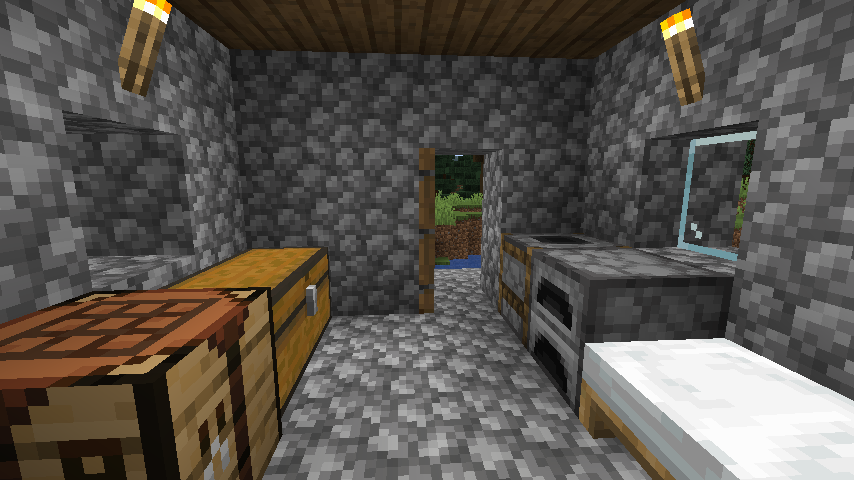
Someday maybe I’ll rearrange the furniture in Outpost One, but probably not. This design has proven suitable for a navvy camp during the railway construction, a waystation for travels, a mine head for excavations in the area, and whatever other purpose.
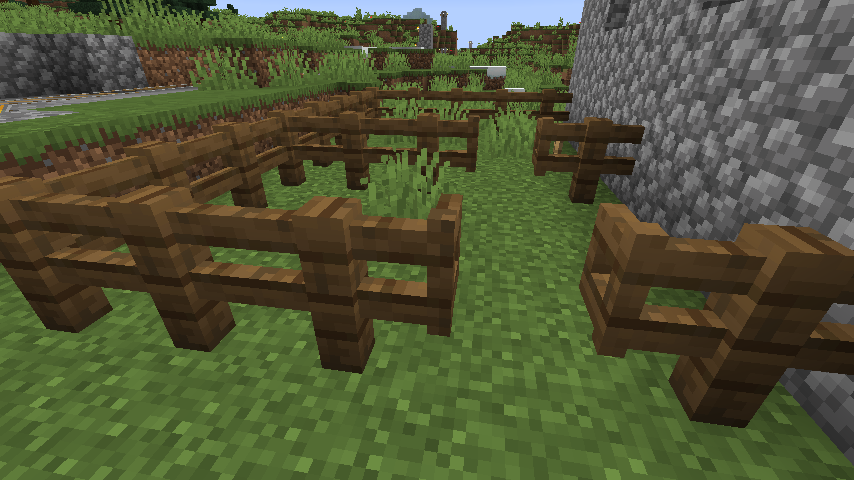
The fenced corral around the side was where I kept the first cows, sheep, and pigs I captured. They came from the plains up near the village past the Castle, which means I was probably stealing the villagers’ free-range livestock. There were no name tags or collars on them, but they were grazing around the village. This goes to the colonialist/imperialist mechanic I keep harping about, but also to my own laziness in not seeking further afield, or in the forest behind the Farm, for animals that were more likely to be feral rather than free-range. Later, when I acquired chickens and llamas for the Farm, those came from wild sources, replicating the path of domestication followed by early humans.
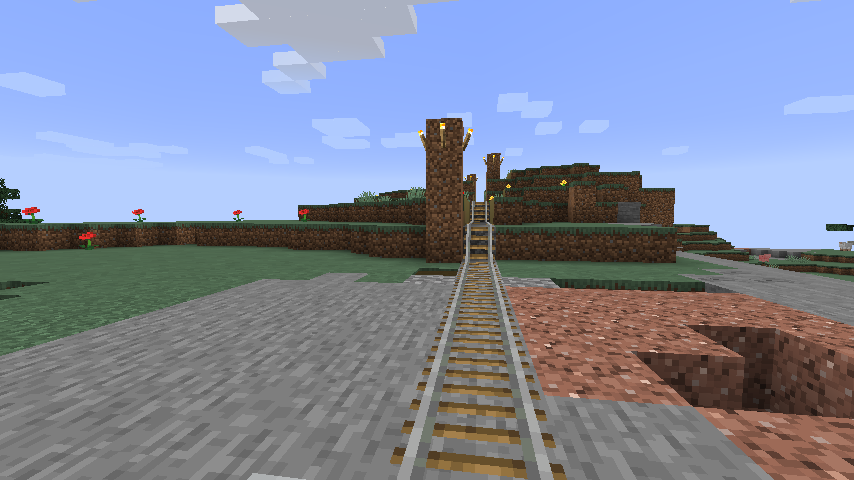
At this point, I need to make some observations about the narrow gauge rail that runs on the older, central lines. This is very much reflective of the way rail developed in the Victorian era. I’m surprised at the effectiveness of Minecraft’s simulation where it comes to rail development. The footpaths got laid out in cobblestone, and those developed into Roman roads, connecting the waystations with lighted paths. From there, some got leveled to grade, or at least made a bit less steep in areas, and the first rail, narrow gauge, was laid, following the old roads. It’s not until later that I started building broader, more level roadbeds, and going to broad-railbed lines more resembling the end of the Industrial Revolution and the beginning of the Gilded Age. I’m also surprised at the verisimilitude of the building process. Acting as my own navvy, I’ve spent far more time leveling land, installing roadbed, and building bridges than I have laying rail or surveying the route. Given my research on the development of rail in the 1800s, this feels very realistic as far as the resource demands, time investment, and apportionment of labor to the various stages of the process. Building a railroad in Minecraft has confirmed some of the ideas I’d picked up from researching actual railway construction.
Outpost One currently serves no useful function other than as the rail station at the Castle end of the Western route. I could scavenge the furnishings, but why bother. I’m not desperate for beds. I’d rather just leave it, and let it be a sort of historical preservation thing.